Diaspore, an aluminum hydroxide mineral with the chemical formula AlO(OH), is a fundamental component in the study of geology and mineralogy. It is significant due to its role in the formation of bauxite, a primary ore of aluminum, and its use in refractories and gemology. This mineral stands out for its unique physical and chemical characteristics, geological formation processes, and distribution across the globe. Diaspore is also recognized for its gemstone variety, prized for remarkable optical phenomena such as pleochroism and color change.
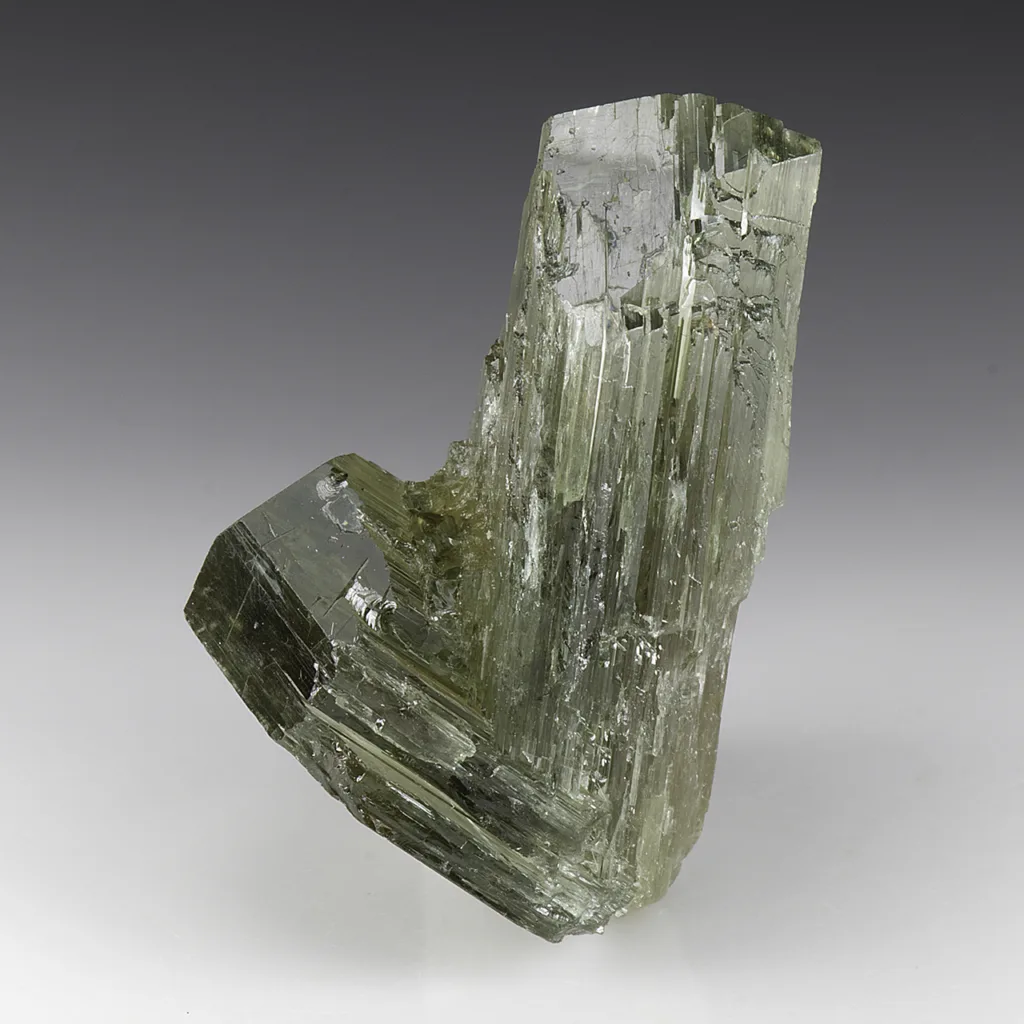
This comprehensive article explores the geology of diaspore, detailing its composition, properties, formation environments, associated minerals, global distribution, industrial applications, environmental implications, and economic significance.
1. Chemical and Physical Characteristics
Chemical Composition
Diaspore belongs to the hydroxide minerals group and has a relatively simple chemical structure:
- Formula: AlO(OH)
- Molecular Weight: Approximately 58.00 g/mol.
- Composition:
- Aluminum (Al): ~52.94%
- Oxygen (O): ~47.06%
The hydroxyl group (OH⁻) in its structure distinguishes it from pure oxide minerals like corundum (Al₂O₃). This composition results in distinct physical and optical properties that are key to its identification.
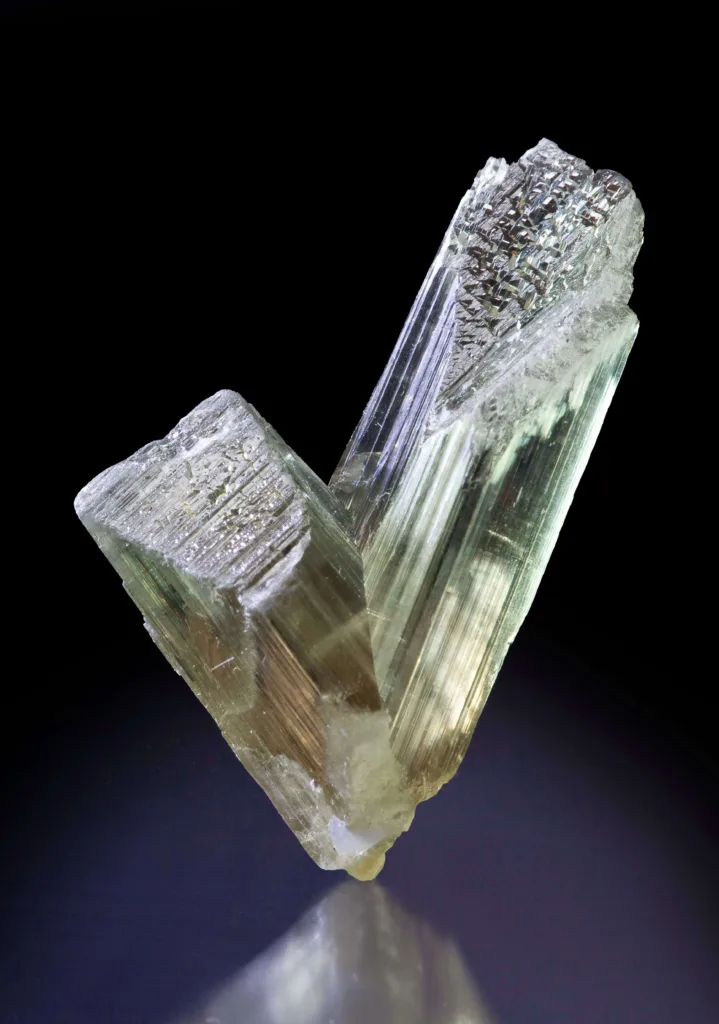
Crystal Structure
Diaspore crystallizes in the orthorhombic crystal system, forming elongated, flattened, or tabular crystals. The atomic arrangement consists of chains of aluminum-oxygen octahedra, with hydroxyl groups linked between chains. This unique lattice accounts for the mineral’s perfect cleavage and optical phenomena.
Physical Properties
- Color: Commonly white, gray, or colorless but may exhibit green, yellow, brown, or pink hues due to trace impurities (e.g., chromium or iron).
- Transparency: Ranges from transparent to translucent, depending on crystal quality.
- Hardness: 6.5–7 on the Mohs scale, indicating moderate hardness suitable for gemstone applications.
- Luster: Vitreous (glassy) to pearly, contributing to its aesthetic appeal.
- Cleavage: Perfect in one direction, which makes it brittle and prone to splitting.
- Fracture: Uneven or splintery.
- Specific Gravity: 3.3–3.5, denoting moderate density.
- Optical Properties:
- Exhibits strong pleochroism, where the mineral shows different colors (e.g., green, yellow, or reddish-brown) when viewed from different angles under polarized light.
- Gem-quality diaspore often exhibits color change depending on the light source, a property highly valued in gemology.
2. Geological Formation
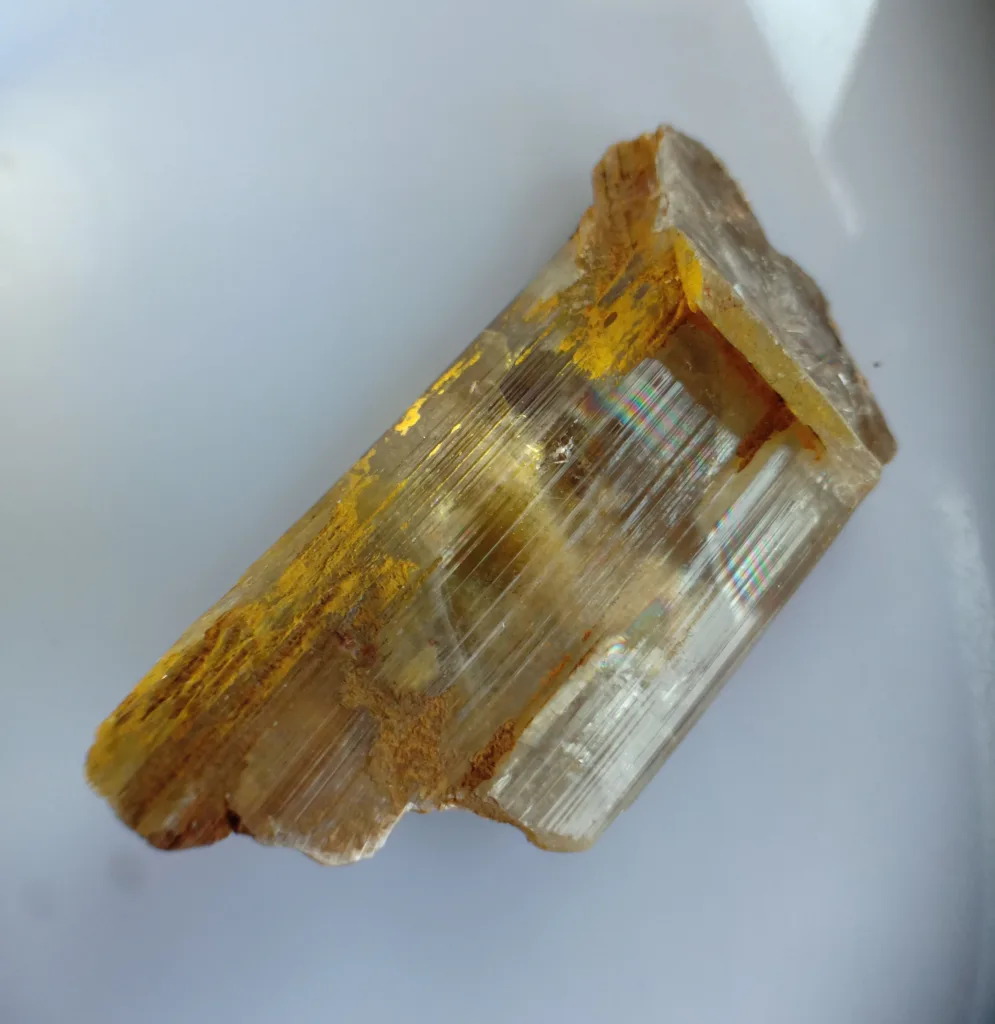
Environmental Conditions
Diaspore forms under specific geological conditions where aluminum-rich rocks undergo chemical weathering, hydrothermal alteration, or metamorphism. These processes involve the interplay of temperature, pressure, and fluid activity.
Processes Leading to Formation
- Chemical Weathering:
- Found in lateritic bauxite deposits, diaspore forms when aluminum-bearing minerals like feldspars decompose under tropical to subtropical conditions.
- Intense leaching removes soluble elements (e.g., silica and alkali metals), leaving behind aluminum oxides and hydroxides like diaspore, boehmite, and gibbsite.
- Hydrothermal Alteration:
- Involves the interaction of aluminum-rich rocks with hot, mineral-saturated fluids. This process may convert other aluminum minerals into diaspore.
- Occurs in volcanic or post-volcanic settings, often in association with zeolites and clay minerals.
- Metamorphism:
- High-pressure, low-temperature metamorphism of aluminum-rich sediments or rocks can lead to the formation of diaspore.
- During dehydration reactions, minerals such as gibbsite or boehmite transform into diaspore.
Geological Settings
Diaspore typically occurs in:
- Bauxite Deposits: The primary setting for diaspore, often alongside gibbsite and boehmite.
- Metamorphic Rocks: Found in phyllites, schists, and other metamorphosed aluminous rocks.
- Hydrothermal Veins: Less common but significant for understanding the mineral’s versatility in different geological contexts.
Associated Minerals
Diaspore commonly coexists with:
- Aluminum hydroxides: Boehmite (γ-AlO(OH)) and Gibbsite (Al(OH)₃)
- Iron oxides: Hematite and Goethite
- Clay minerals: Kaolinite, Illite, and Montmorillonite
- Silicates: Quartz and Chlorite
3. Global Distribution
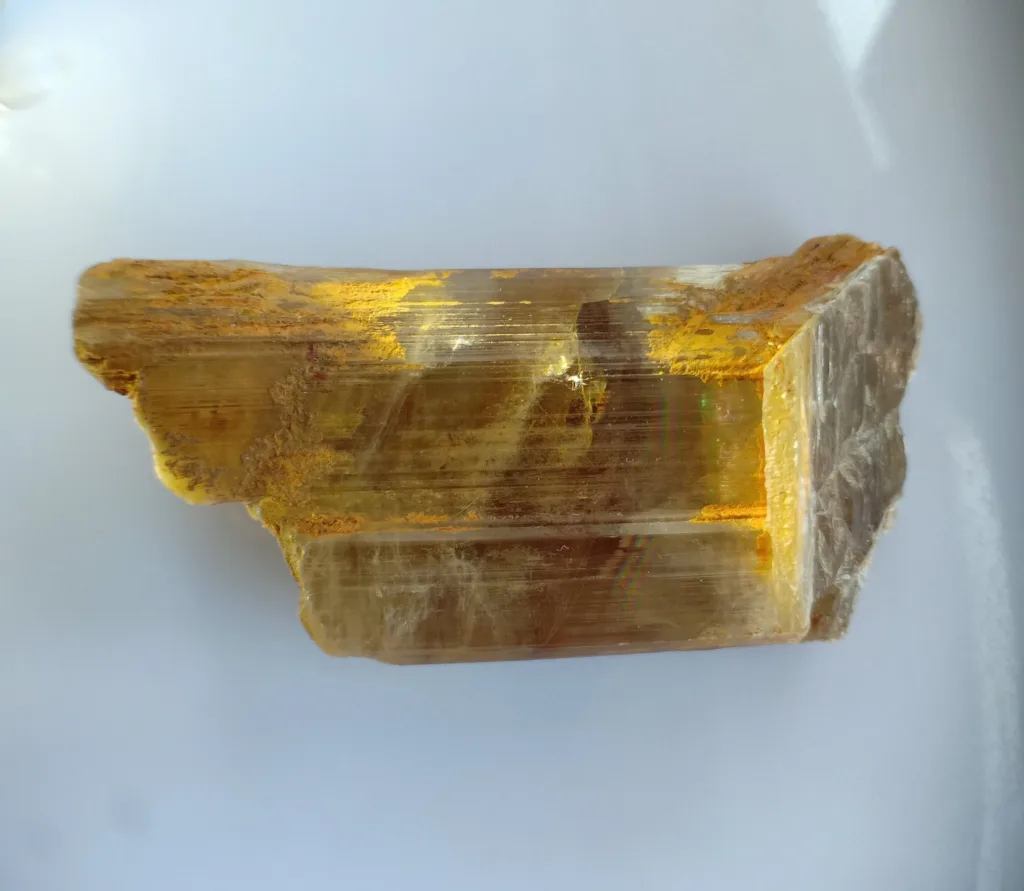
Diaspore deposits are widely distributed across the world, with notable occurrences in regions rich in bauxite and aluminous rocks.
Major Producing Countries
- Turkey:
- Known for gem-quality diaspore, often marketed as zultanite or Csarite.
- Deposits in the Muğla Province yield some of the finest transparent diaspore crystals.
- India:
- Significant deposits occur in the bauxite-rich regions of Odisha, Madhya Pradesh, and Jharkhand.
- Primarily mined for industrial uses, though occasional gemstone-quality material is found.
- Jamaica:
- Bauxite mining in Jamaica yields diaspore as a secondary mineral.
- Deposits are weathering products of limestone and basalt.
- United States:
- Found in bauxite formations in Arkansas, Georgia, and Alabama.
- Mining focuses on aluminum production.
- Australia:
- Leading producer of bauxite, with diaspore as a common constituent.
- Russia and China:
- Host vast bauxite reserves containing diaspore as part of the aluminum extraction process.
4. Diaspore in Gemology

Diaspore is celebrated in gemology for its unique optical effects, especially pleochroism and color change.
Gemstone Quality
- Color Change: Changes from greenish in daylight to pinkish or purplish under incandescent light due to trace chromium or vanadium.
- Clarity: High clarity enhances its value, with transparent specimens being highly sought after.
- Cut: Typically faceted to maximize its pleochroic and color-change properties.
- Durability: Although moderately hard, its perfect cleavage necessitates careful cutting and handling.
Market Names
- Zultanite: Trademarked name for gem-quality diaspore from Turkey.
- Csarite: Another commercial name for Turkish diaspore.
5. Industrial and Economic Significance
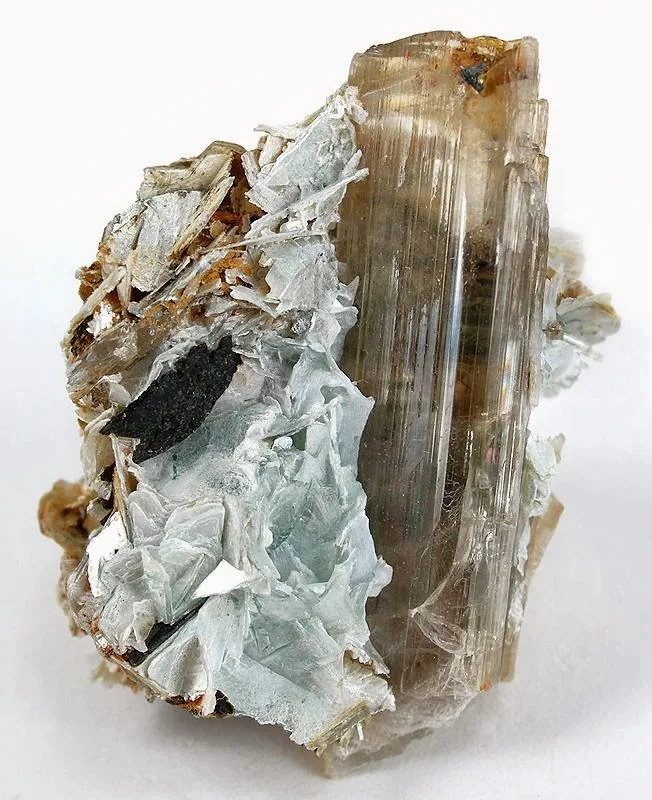
Applications
- Aluminum Production: As part of bauxite ore, diaspore is critical for producing aluminum, a vital metal in industries ranging from aerospace to packaging.
- Refractories: Used in heat-resistant materials due to its high melting point and stability.
- Pigments: Ground diaspore contributes to pigments in paints and coatings.
- Gemstones: High-value market for jewelry, especially in exotic pieces featuring color-change stones.
Economic Impact
Regions with significant diaspore reserves benefit from its extraction and processing, supporting local economies and providing raw materials for global industries.
6. Environmental Considerations
Mining diaspore, especially from bauxite deposits, poses environmental challenges, including:
- Deforestation: Removal of vegetation for mining operations.
- Soil Erosion: Disruption of land structure.
- Water Contamination: Runoff from mining activities can introduce sediments and chemicals into water bodies.
Mitigation Measures
- Land Rehabilitation: Restoring mined areas through reforestation and soil stabilization.
- Sustainable Mining Practices: Implementing technologies to reduce waste and emissions.
- Recycling Aluminum: Reduces reliance on primary mining.
Conclusion
Diaspore is a mineral of immense geological, industrial, and gemological importance. Its occurrence in bauxite deposits underscores its role in aluminum production, while its rare gemstone variety highlights its aesthetic value. Understanding diaspore’s formation, properties, and applications provides valuable insights into Earth’s geological processes and resource management. With careful environmental stewardship, the benefits of diaspore mining can be harnessed sustainably, ensuring its continued contribution to science, industry, and art.




































